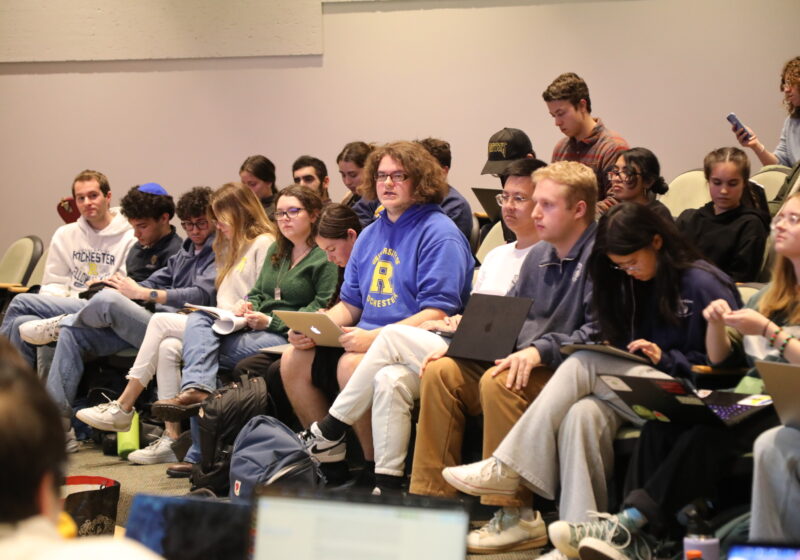At times, the human body seems almost limitless in its potential. After scaling an exhausting trail of 1,576 steps over the course of 86 floors, Thomas Dold of Germany won the 30th annual Empire State Building Run-up in a mere 10 minutes, 25 seconds.
To break that down for you mathematically, each floor has approximately 18 steps, which Dold climbed at an average rate of 2.5 steps per second, or one floor every 7.2 seconds.
This all assumes my mathematical skills are correct, but, other than the straight C+ grades I got in high school algebra, I have no reason to believe this is not the case. In second place came German Jahn Mattias, lazily crossing the finish line at an embarrassing time of 10 minutes, 56 seconds, or 2.4 steps per second. Wow, how weak is that?
Nevertheless, I am still impressed at a feat I feel like my constitution is simply not suited for. These are people who train relentlessly and vigorously, pouring their heart and soul into, well, climbing stairs. Maybe the Stairmaster wasn’t enough of a challenge. And I can only imagine their disdain of escalators. But whatever the case, they do it. Those dozen of competitors do it.
The amount of abuse the human body can endure is almost beyond words. For instance, last month, “Wired” magazine detailed the story of Dean Karnazes, a man who perpetually lived in a state of drunken bliss. This continued to occur until late one night when he, as if subconsciously channeling Forrest Gump, started running.
After 15 miles, his blood now refreshed and mind sobered, he realized that he had a knack for running.
Among his feats were running 350 miles straight without sleeping a wink. When he was 44, he ran approximately one marathon a day for 50 days. Oh, and somewhere in there he ran a marathon to the South Pole.
In the same magazine issue, “Wired” detailed how the human body can essentially be tricked out.
Joints can be made stronger. Ligaments can be implanted that will make your arm throw like never before. And let’s not forget about our friend, the dietary supplement.
Oh, and steroids.
Yes, technology has gotten to the point, surgeries have gotten so commonplace, that making a body better goes way beyond mere exercise.
And, as great as that salad with the fat-free dressing is, it soon might not be enough. The drive to better, faster, stronger, bigger or whatever will not slow. How far will athletes go to make sure they are a record holder or that they can at least make a name for themselves? The steroid “shock” was just the beginning – the deep breath before the plunge.
The real problem at the center of body enhancement is that we can no longer define exactly what sports are about. Sure, we can say, “Oh, football, that’s a sport.” This extends to baseball, hockey, soccer and their ilk. But what’s at the heart of each sport?
Take baseball, for instance. America’s pastime. What we know about the sport’s origin is that it began as a fairly simple game presumably created in the United Kingdom. But what, exactly, was the purpose? I’d guess it was like jacks: Who can hit a ball farthest, and in the time the ball is in the air, how far can the batter run?
Now, the game has evolved from its simple days. What can even count as playing fair? Back in the day, if a kid used a strong oak bat instead of a weaker cherry tree bat, the one with the oak bat would have a clear advantage. Metal bats are even better, and aluminum ones better still. Babe Ruth with a metal bat would undoubtedly be even better than Babe Ruth with a wooden bat. Such changes are universal, so everyone is equal across the field. But they’re no longer just playing with their own raw abilities – the tools are upgraded.
I always thought sports were about pure talent, and that the attraction to them was that people wanted to see how talented others were.
Everything from football to cycling deserves some amount of inspection. When athletes turn to surgery to improve their bodies – and I guarantee they will – then we will have to enter an entire new sphere of questioning.
A drunk ran 350 miles without sleep, through training and eating well. That’s more than impressive. No surgery required.
Brenneman is a member of the class of 2009.



